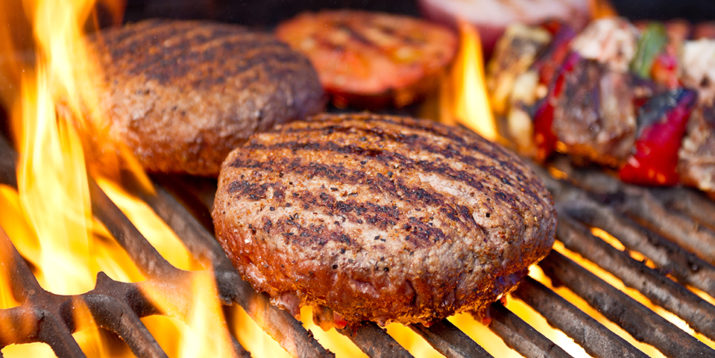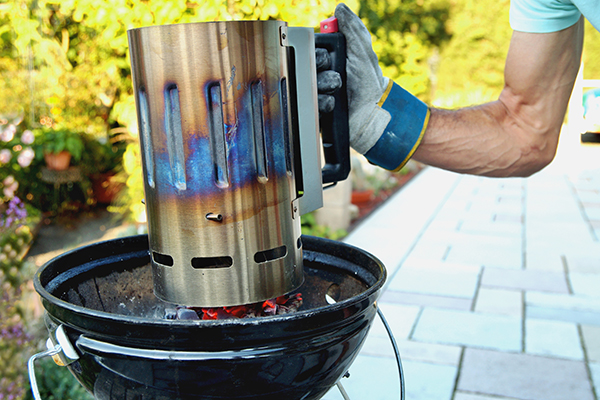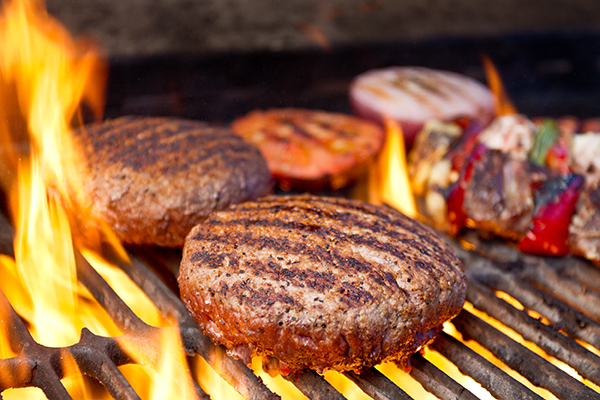Tips & Tricks to Unleash Your Inner Grillmaster

This year, give yourself a new challenge. Learn to master a charcoal grill instead of using your old gas model.
While there’s plenty to love about learning how to charcoal grill properly, there are some things you’ll need to know to get started safely.
Read on and learn the ins and outs of using a charcoal grill, how to cook everything from steak and burgers to veggies, and some common mistakes to avoid.
Be sure to combine this guide with our helpful grilling tips for a summer cookout that will make your guests think you’ve been doing this for years.
1. Use the chimney method to light it

This is the method of grill lighting that Michael Haas, R.D., and co-founder of Angry BBQ, prefers because of how easy it is.
You’ll need to pick up a chimney starter, and then you’re just a couple of steps away from having the grill lit:
- Load your chimney starter with your favorite charcoal.
- Place some paper under the chimney in the bottom of your grill.
- Light the paper.
And that’s it. The heat from the paper rises, lighting the charcoal all the way up.
Haas recommends giving the charcoal 10-15 minutes to ignite fully.
Then, once they turn white, you’re ready to dump your charcoal into the grill.
2. Heat up your grill quickly
You need to allow a little more time when working with a charcoal grill. That’s where learning how to work your vents comes in.
“The more air there is, the hotter the fire,” explains Jeanette Kimszal, RDN, of The Radiant Root. “Be sure to open the vents on the grill to keep the air flowing into the fire.”
“Most charcoal grills contain a bottom vent and a top vent,” Haas adds.
He explains that the bottom one is the vent that controls most of the airflow, so he keeps his “bottom vent fully open and the top vent half open when I want my grill to heat up quickly.”
3. Maintain a steady temperature
You want consistent heat for the best grilling results, and that also comes down to your vents.
“Once I get to the desired temperature, I start closing my bottom vent slightly, so my grilling temp stays consistent,” says Haas.
4. Take note of the elements
“Wind and outdoor ambient temperature will also reduce the heat output of your coals, which can make the cook take even longer,” Haas explains.
“I always plan an extra 30 minutes in my grilling schedule if I’m using the charcoal grill,” he adds.
5. Use two-zone cooking
This sounds complicated, but you’ll master it quickly: Put your lit charcoal on one side of the grill so that “one side of the grill is searing hot while the other side is at a lower temperature,” says Haas.
Kimszal says, “foods that cook quickly should be placed right on top of the coals.” This would include pork chops or our Ginger Soy Flank Steak.
Whereas “foods that cook longer can be placed to the side of the coals, so they get indirect heat,” she adds. Try this method with our Grilled Romaine and Walnut Salad.
Charcoal Grilling Mistakes to Avoid

These mistakes are common but easy to avoid. Make sure to avoid them for a better grilling experience.
6. Don’t Open the Lid Too Much
“Only open the lid to add your food or to check how the cook is going,” warns Haas. If you keep lifting it, “you will lose a lot of heat when opening the grill lid, and it will take time to get your grill back to temperature.”
7. Rushing the process
Remember, you’ll need extra time for a charcoal grill — but the result will be worth it!
If you’ve already lifted the lid a couple of times, go ahead and add more minutes to your cook time.
8. Skimping on charcoal
Haas says you can easily use the vents to raise or lower the temperature of your charcoal grill — as long as you have enough charcoal.
Just because you’re aiming for a low-and-slow method doesn’t mean you can use less charcoal.
9. Leaving old ashes in your grill
You’ll want to clear out old ashes before you try to light new charcoal briquettes or lumps. There can be “too many ashes in the grill for the charcoal to be lit,” Kimszal explains.
